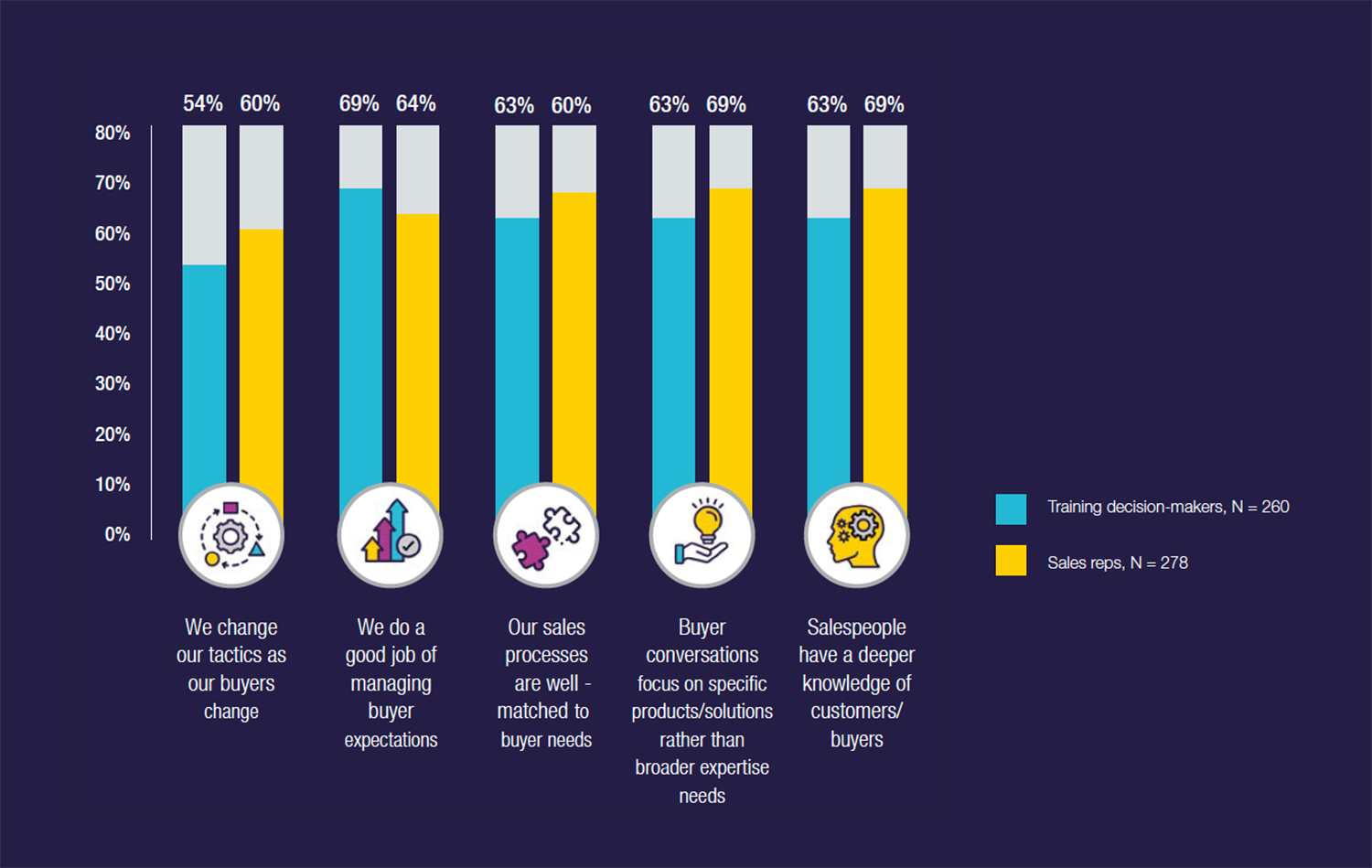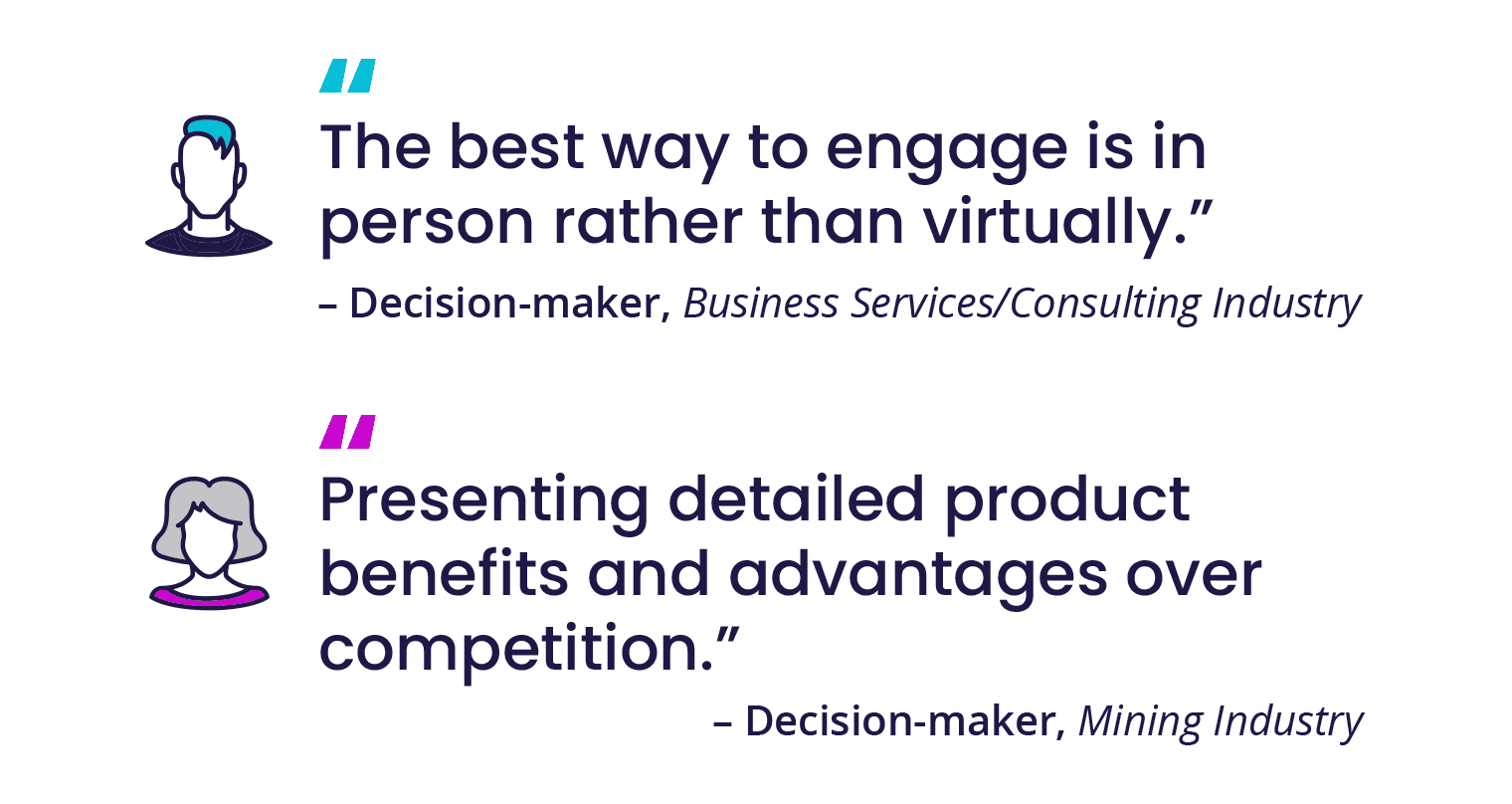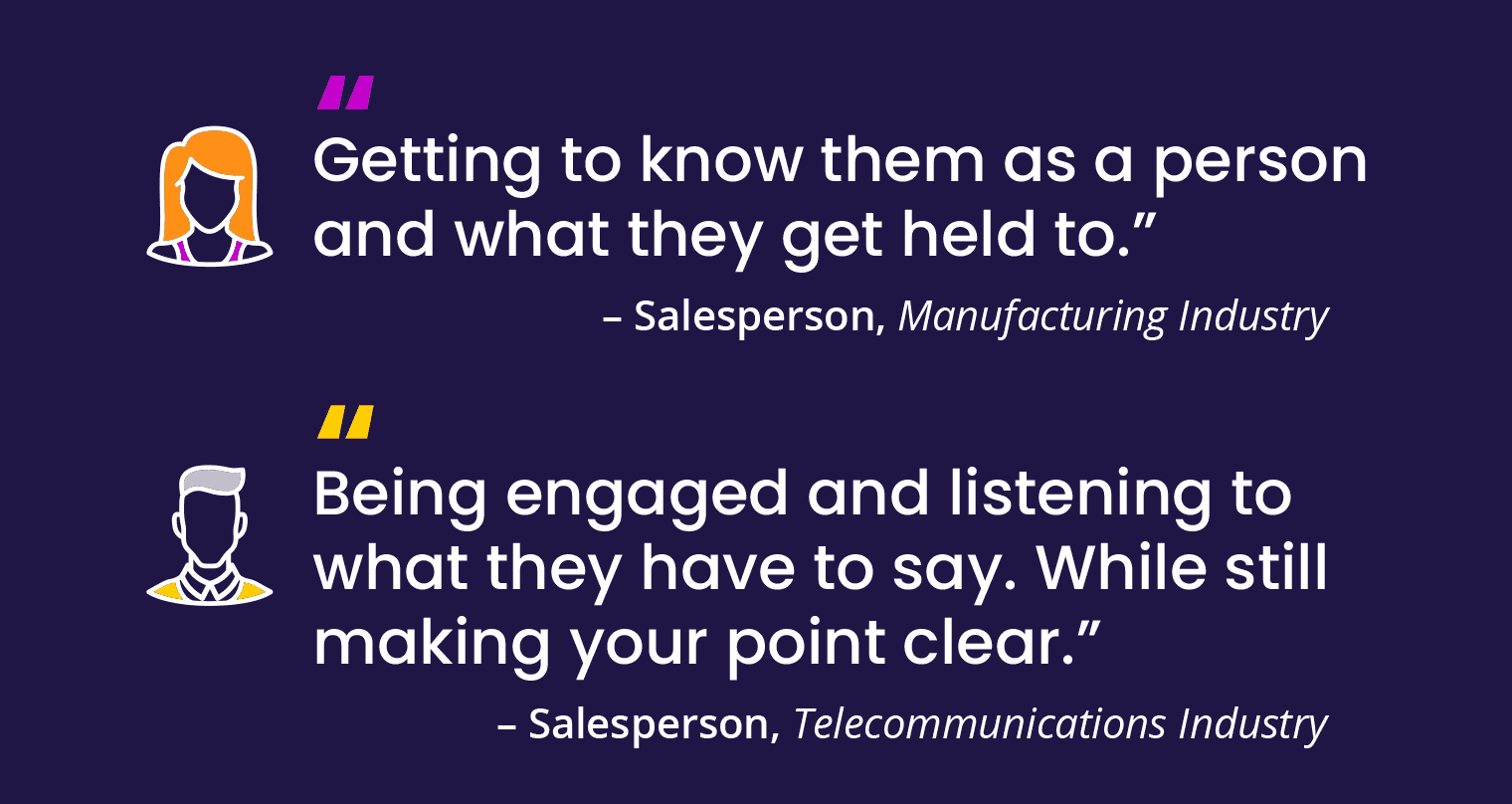Build deeper connections
6th July 2023 | Julie Thomas
Understanding best practices for a buyer-centric sales approach.
A buyer-centric approach to selling is table stakes in today’s competitive business landscape – and yet, buyer-centric approaches across companies and industries seem to be vastly different. It begs the question: How do sales leaders and sales representatives interpret buyer-centricity and are they aligned on its crucial components?
To further explore this topic, ValueSelling Associates and Training Industry conducted a survey of 260 L&D and sales decision-makers (sales leaders) and 278 salespeople across a range of industries and company types. We investigated their understanding of buyer-centric sales from all angles and found some areas of agreement as well as responses that hint at fundamentally different viewpoints. Here are some of the highlights of the new research.
Defining buyer-centric sales
What is buyer-centric sales? Based on our data, most decisionmakers (or sales leaders) and salespeople agree on these five points:
- Being buyer-centric involves creating authentic connections between salespeople and clients.
- It requires salespeople to research and prepare insightful questions for client interactions.
- Buyer-centricity involves working with prospects to uncover ideas for ideal solutions and then mapping solutions to that vision.
- It requires salespeople to have industry expertise and/or experience.
- Being buyer-centric means putting the client’s goals and needs first.
Most of the points above are tied to tangible selling behaviours. From researching and preparing to centring the interaction on the client’s goals, these are not abstractions but actions that a salesperson can take.
Our survey asked respondents to characterize the sales approach that their organizations take, as shown in Figure 1. From these results, it appears that decision-makers and salespeople are fairly aligned in how they view the sales environment.

However, when we asked both sets of respondents about the best way to engage with prospects, clear differences emerged. The results of the survey highlighted different perspectives among decision-makers on the best way to engage with prospects. Some emphasized the importance of in-person interactions while others focused on how salespeople position their products (Figure 2).

Figure 2: Decision-maker responses to engaging with prospects.
It’s telling that salespeople responded differently—for them, it’s all about creating authentic connections (Figure 3).

Best practices for buyer-centric sales
How do you put a buyer-centric sales approach into practice? Human connection remains at the core of sales, even as remote work becomes more common in many industries. Sales professionals must adapt by learning new skills and behaviours to better serve the buyer experience. To support this transition, here are the best practices that organizations can use to align with a buyer-centric approach:
- Use a common enterprise language to establish a buyercentric culture.
- Create feedback loops.
- Address contextual challenges.
- Measure and reward buyer-centric behaviours.
- Harness data and analytics.
- Provide ongoing sales training and support.
Use a common enterprise language to establish a buyer-centric culture
To be truly buyer-centric, sales organizations need to encourage a common language across the enterprise. This is about training, and it’s also about how sales leaders and processes use and reinforce this language. Through a common lens, sales organizations can foster a culture that values the customer experience above all else. Every aspect of the buying process – from research and lead generation to account management and customer support – should be designed with the customer in mind.
Create feedback loops
There are several reasons a sales organization may seek to establish feedback loops. Often, it’s to get a handle on metrics related to what salespeople are doing, or to better understand what differentiates failed prospects from happy clients, or simply to quantify things to get a benchmark for which problems are real and which ones are illusory. To be buyer-centric, sales organizations need to harness feedback to forge dialogue with prospects and clients, and to help identify problems and additional needs.
Address contextual challenges
It goes without saying that every sales organization will face challenges – that’s a reality of business. What form are these challenges taking? Are they preventable? Can they be mitigated?
For many organizations, what may seem like sales problems are often symptoms of underlying conditions – they’re the piece of the iceberg that’s visible. And treating the symptom does not necessarily address the underlying issue. To be buyercentric, there are two categories of problems that organizations need to examine that often manifest as other symptoms; these include issues with technology and issues with sales skills.
Through a common lens, sales organizations can foster a culture that values the customer experience above all else.
Measure and reward buyer-centric behaviours
To be buyer-centric, sales organizations need to measure the behaviours of salespeople. In turn, these behaviours need to be reinforced. To emphasize the importance of a buyer-centric approach, sales organizations should incentivize and reward customer-centric behaviours and results. This can include recognizing and rewarding salespeople who consistently demonstrate a strong customer-centric attitude, providing performance-based incentives tied to customer-centric results like account expansion and customer retention, and incorporating customer feedback into performance evaluations.
Leverage data and analytics
Data and analytics can provide valuable insights into sales performance, customer behaviour, and market trends. By leaning into the possibilities of data and analytics, sales organizations can make data-driven decisions and adjust their sales approach to better meet the needs of buyers. This includes tracking metrics such as customer satisfaction, lead conversion rates, and customer lifetime value. The objective isn’t to create a one-size-fits-all approach to buyers, but to better understand how buyers might differ and the ways in which a salesperson could adjust their behaviours and positioning to keep the buyer at the centre of the sales process.
Provide ongoing sales training and support
Continuous learning and development are essential for salespeople to stay up to date with industry trends, sales best practices and customer needs. Training is often the crucial component in creating lasting behavioural change. This can include learning activities such as regular coaching sessions, ongoing instructor-led and online training programs and access to just-in-time learning and industry resources and experts. The key word is “continuous,” as ingraining a buyer-centric approach into the sales process typically isn’t accomplished on the merits of a single, once-a year training initiative.
Once you’ve successfully identified and develop the right sales behaviours, support can come through technology. For example, embedding on-demand learning inside of CRM systems provides reps with targeted information at the point of need. Streamlined revenue tech that includes qualification tools, plan creation templates and account-planning add-ons can also be included to expedite buyer-centric selling — and improve customer data, interactions and relationships. In turn, this enables sales managers to focus on monitoring and cultivating buyer-centric behaviours at scale.
In conclusion, to achieve a successful buyer-centric approach, sales organizations must use a common enterprise language, establish feedback loops, address contextual challenges, invest in the right revenue tech and develop the necessary sales skills. The key to successful implementation lies in measuring and reinforcing buyer-centric behaviours at the individual salesperson level. By following these best practices, sales organizations can build deeper connections with prospects and customers, better understand their needs and preferences and ultimately drive sustainable business growth.
- Download ValueSelling Associates’ new ebook: From Selling to Solving: The Buyer-Centric Approach to Sales Success.

